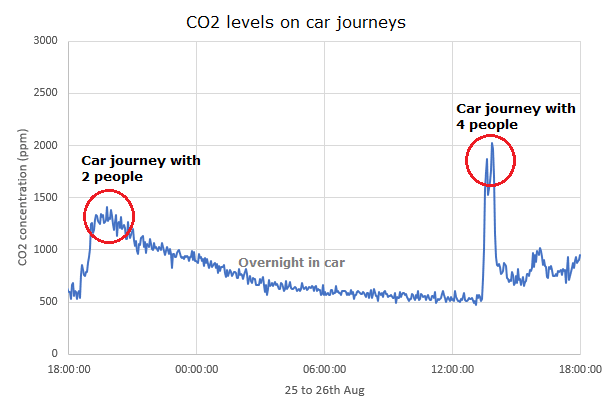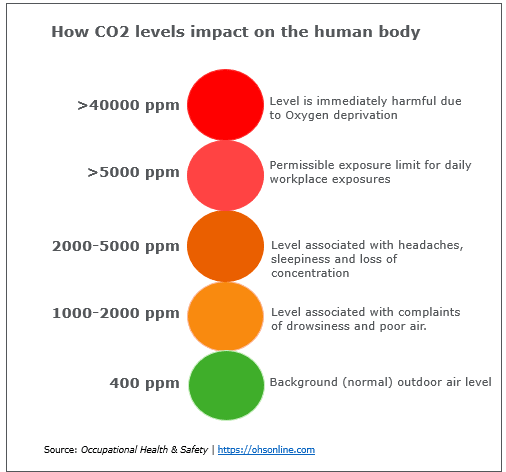Gas Sensing Solutions helps monitor CO2 levels for health and wealth
Follow articleHow do you feel about this article? Help us to provide better content for you.
Thank you! Your feedback has been received.
There was a problem submitting your feedback, please try again later.
What do you think of this article?
Last year’s Carbon Dioxide (CO2) shortage highlighted to people just how widely used CO2 is in the food and drinks industry. From putting the fizz into fizzy drinks, the chill into chilled foods and the fresh into fresh bags of salad. Not to mention the many other applications, such as fire extinguisher systems, making semiconductors, extracting crude oil and medical procedures.
In all these applications and many more, it is vital to monitor the levels of CO2. Firstly, to make sure that you are using the right amount for the job in hand, maximising efficiency and minimizing costs. Secondly, and more importantly, leaks are a Health and Safety issue. Due to CO2’s odourless and transparent properties, most people believe it to be harmless. CO2 levels have generally been ignored in day to day life.
Yet, we all recognise the symptoms of high levels of CO2. That muggy feeling in a room… Feeling sleepy as a meeting drags on… The instinctive answer is that you need some fresh air as the oxygen levels must be getting low. Actually, it takes a big change in oxygen levels to have an effect - such as going up a high mountain. In reality, it’s a change from a typical level of CO2 to as little as 1000 ppm that can start to have a deleterious effect on concentration.
Interestingly, the human body does not have a better alarm system to alert us to rising levels of CO2. The reason for this is because we breath in CO2 at levels of around 400 ppm but we breath out CO2 at 35,000 to 50,000 ppm, which would flood a body’s alarm system set to a level of, say, 1000 ppm. Plus, for millions of years of evolution, our bodies never had to develop a system to alert us to incoming levels above the ambient 400ppm as that rarely happens in nature.
Now that we live and work in enclosed spaces – factories, schools, offices and homes – the simple act of breathing out in a poorly ventilated space can raise the CO2 levels in minutes to over the 1000 ppm level. The more people, the faster and higher the level rises.
Which is where we come in with our award-winning range of CO2 sensors. For over a decade, Gas Sensing Solutions has been pioneering a new breed of CO2 sensors that are solid-state for ruggedness and reliability, ultra-fast to measure accurately in rapid time and ultra-low power, eliminating the need for mains power.
What sets Gas Sensing Solution’s products apart is the use of LEDs at the heart of the sensors. Other CO2 sensors on the market are so power hungry that they must be plugged into the mains in order to operate. GSS sensors are unique in that they can run on battery power for up to ten years, opening up a whole range of applications that were just not possible before. Our sensors can be found being used on International Space Station and CO2 monitors in re-breathable diving equipment.
As the research and awareness grows of how elevated levels of CO2 can affect people in enclosed spaces, our battery-powered sensors are increasingly being used to create CO2 monitoring systems for buildings. Before our sensors came to market, mains-powered CO2 sensors had to be hardwired into a building with a mains power supply to each sensor. The outlay for cabling up each sensor, coupled with the cost to redecorate after installations in existing buildings meant that the total cost to fit the sensors was much more than the sensor itself. We can break this paradigm as our sensors can be used at the heart of monitors that are simply fixed to the wall wherever they are needed. No cables required, significantly reducing the costs of the whole project. The power requirements of our sensors are so low that there is power to spare for wireless connections. Should the interior of the building change over time, there is no problem as these monitors can simply be repositioned to suit the new layout.
So, what are the benefits of installing CO2 monitoring systems?
Health and improving performance
Workers and students spend about half their time in classrooms and offices.[iv] This can mean large numbers of people spending several hours together in enclosed rooms, with rising CO2 levels. According to the Technical University of Denmark[v], recent studies suggest that exposure to carbon dioxide at concentrations between 2,500 ppm to 4,000 ppm can have negative effects on human performance. A further study by the Harvard Chan School of Public Health found that increased CO2 levels caused a direct and negative impact on cognitive and decision-making skills. The study found that on average peoples' cognitive scores dropped a whopping 21% with a 400 ppm increase in CO2[vi].
In terms of legislation, the Building Bulletin (BB) 101 states that ventilation should be provided in all learning spaces to control CO2 levels, and that concentrations should not exceed 1500 ppm[ix]. Therefore, maintaining suitable indoor air quality (IAQ) in schools and the workplace is important for alertness and productivity.
In a poorly ventilated room, or in an enclosed or confined area, levels of CO2 can increase in a very short space of time. To find out just how fast, we took a hand-held datalogger based on a GSS CozIR®-A CO2 sensor on a car journey. With four people inside, the level of CO2 reached 2000 ppm in just 20 minutes. This is the level where CO2 symptoms can start to cause loss of concentration, headaches and sleepiness for example. So, the tiredness from long car journeys is mainly due to the effects of long exposure to elevated CO2 levels!
Wealth and saving money
Monitoring and controlling CO2 levels can help improve energy efficiency in buildings – saving money and helping to save the planet at the same time! According to a report by the Minnesota Department of Commerce[viii], implementing a Demand Control Ventilation (DCV) system can reduce energy consumption by over 30%. The reason is that if ventilation systems are simply controlled by a timer there is no accounting for the number of people in every space. Empty rooms hardly need the air changed, whereas a room packed with people needs an appropriate air change rate to keep the CO2 levels down. So, a DCV system typically uses CO2 sensors to estimate the number of people in a building space so that it only ventilates the air when required. Changing the air has a cost implication for the fans plus there may be the additional costs of heating or cooling the air. Therefore, there’s huge potential for energy and cost savings for building owners, facility managers and tenants by monitoring CO2 levels as a control mechanism.
Gas Sensing Solutions has a range of sensors that have been specially developed to meet the specifications of systems to monitor CO2 levels in buildings. As mentioned, these are so low powered that they can operate for many years on just batteries alone. This ultra-low power requirement is also opening up new design possibilities for monitors that just use the power that is generated by tiny solar cells on the monitors. As the concept of being able to power our devices with just solar power has been proven, companies are approaching us to help with other solar-powered Internet of Things applications. These sometimes require sensors that are not in our standard range which is not a problem because we manufacture every part of our sensors and can therefore create bespoke solutions to precise meet a customer’s needs.
Please have a look at the GSS range of CO2 sensors. If there is something more bespoke you require, please contact us and we will be happy to create a custom solution.
[ii] http://www.energy.wsu.edu/Documents/CO2inbuildings.pdf
[iii] http://www.energy.wsu.edu/Documents/CO2inbuildings.pdf
[iv] http://www.energy.wsu.edu/Documents/CO2inbuildings.pdf
[v] http://orbit.dtu.dk/files/125818556/1_s2.0_S187770581502768X_main.pdf
[vi] https://www.airveda.com/blog/Why-We-Should-Measure-Carbon-Dioxide-CO2
[vii] https://ohsonline.com/Home.aspx
[viii] http://mn.gov/commerce-stat/pdfs/card-report-energy-savings-demand-control-ventilation.pdf
[ix] https://www.gov.uk/government/publications/building-bulletin-101-ventilation-for-school-buildings






